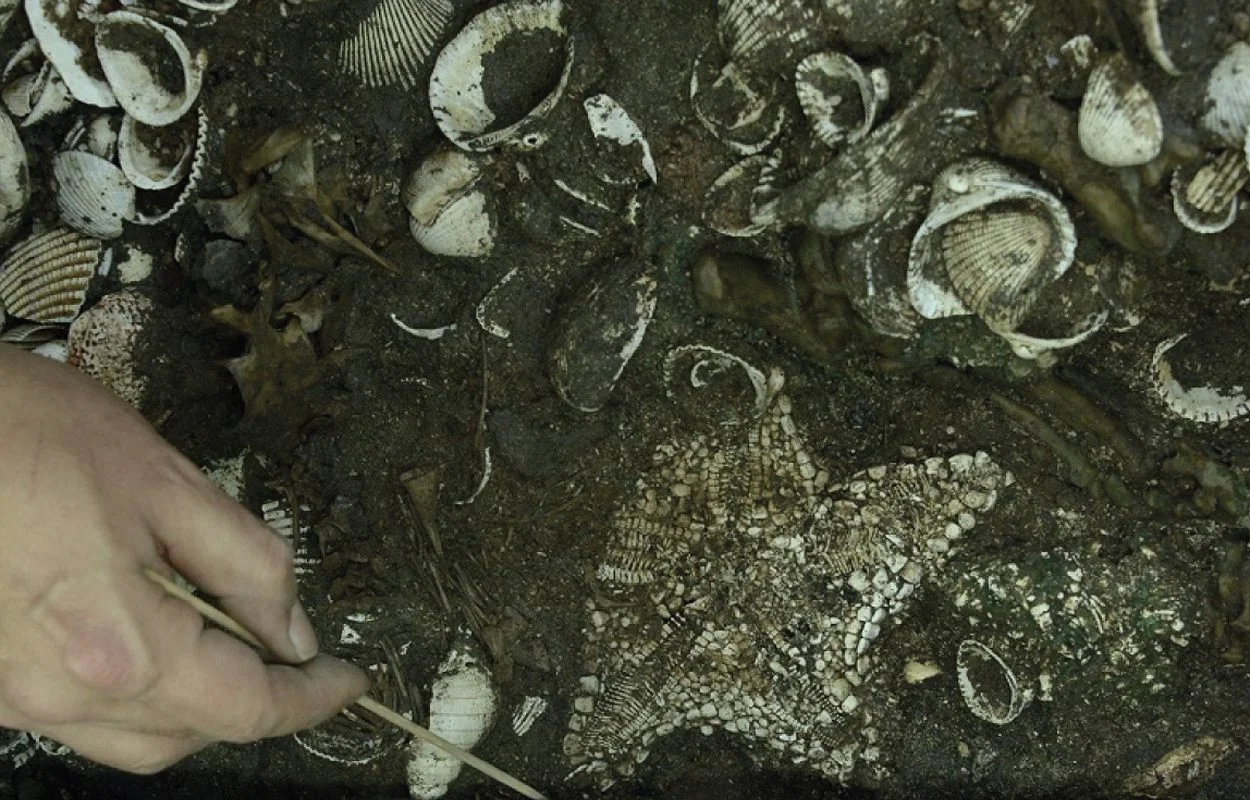Archaeologists excavating in the Templo Mayor site, located in the former Aztec capital of Tenochtitlan in Mexico City have uncovered over 160 starfish placed as ritual offerings.
The Templo Mayor was the primary temple of the Mexica people, dedicated simultaneously to Huitzilopochtli, the god of war, and Tlaloc, the god of rain and agriculture, each of which had a shrine at the top of the pyramid with separate staircases.
Excavations were conducted by the National Institute of Anthropology and History (INAH) as part of the Templo Mayo Project (PTM), where archaeologists found 164 starfish deposited in a circular Cuauhxicalco structure placed inside the temple’s sacred enclosure. The starfish are of the Nidorellia armata species, also known as the chocolate chip star and are commonly found from the Gulf of California to northwest Peru.

Based on historical sources such as the Matrícula de Tributos and previous findings, archaeologists believe that the offering is associated with warfare as the location in the Cuauhxicalco is orientated with the area consecrated to Huitzilopochtli.
Located in the sixth construction stage of the Templo Mayo, this places the deposit around the year AD 1500, a period of transition between the reigns of Ahuízotl and Moctezuma Xocoyotzin. Ahuízotl was the eighth Aztec ruler, the Huey Tlatoani, who supervised a major rebuilding of Tenochtitlan and the expansion of the Templo Mayo.
Ahuízotl is also attributed with the expansion of Mexica territory into various parts of Mesoamerica, including the Gulf of Mexico where sea corals were imported and the Pacific Ocean which would be the source of the starfish.
Archaeologists Báez Pérez said: “A good part of the Mesoamerican peoples believed that the origin of the world was linked to the sea, therefore, marine organisms were treated as relics. In the case of the Mexicas, their military power allowed them to bring thousands of marine objects and recreate an entire aquatic environment in Tenochtitlan itself.”
Header Image Credit : Belikova Oksana







